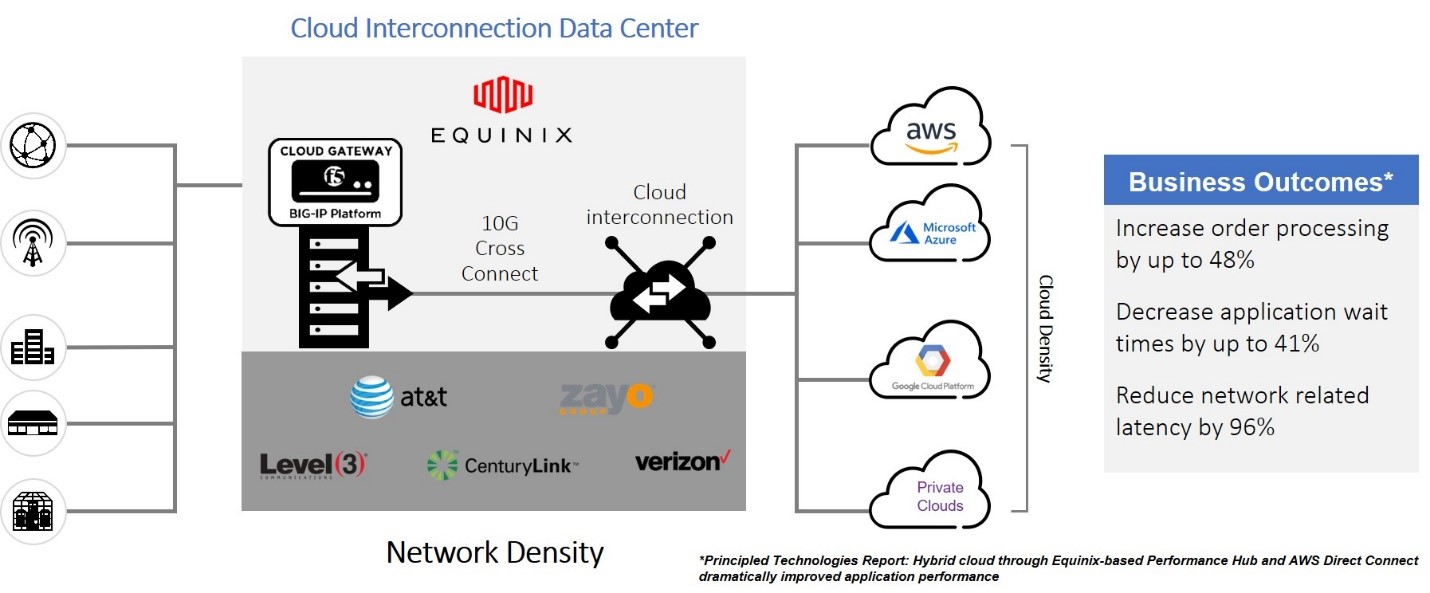F5 Access Manager와 Equinix를 사용하여 멀티 클라우드 애플리케이션에 대한 액세스를 일관되게 제어하세요
원격 접속 문제는 우리의 팬데믹 대응이 "사무실이 아닌 다른 곳에서" 일하는 것을 계속 권장하거나 요구함에 따라 우선순위가 되었습니다. 원격 접속에 대한 첫 번째 우려는 사용자에게 집중되었습니다. 사용자는 어떻게 데스크톱에 접속하나요? 생산성 향상을 위한 애플리케이션은? 비즈니스에 적용 가능한 분야는? 파일? 데이터베이스? 코드 저장소? 이런 우려 중 대부분은 SaaS로 전환하면 해결됩니다. 일반화된(상품화된) 비즈니스 애플리케이션이 SaaS를 통해 빠르게 제공되고 있었기 때문에 이런 일이 일어날 가능성이 항상 있었습니다.
원격 액세스에 대한 두 번째 우려 사항은 덜 눈에 띄지만 우선순위는 결코 낮지 않습니다. 바로 IT 부서가 인프라와 애플리케이션 서비스를 배포하고 운영하는 데 사용하는 대시보드와 콘솔에 대한 운영 액세스 문제입니다. 일부 작업에는 실제로 현장에 있어야 하는 경우도 있습니다. 예를 들어 고장난 하드 드라이브를 처리하려면 실제로 하드 드라이브를 제거하고 교체해야 하지만 많은 작업에는 그렇지 않습니다. 원격으로 처리할 수 있는 인프라와 애플리케이션은 다음과 같아야 합니다.
두 가지 모두 관리하기가 특히 까다로우며, 특히 여러 클라우드와 데이터 센터 속성에 걸쳐 있는 경우 더욱 그렇습니다. 조직, 특히 마이그레이션을 서두른 조직의 경우 여러 액세스 제어 지점을 갖게 되는 경우가 너무 많습니다. 하나는 Azure용, 하나는 Amazon용, 하나는 데이터 센터용 등등. 이러한 상황에서 발생하는 과도한 운영 비용을 제쳐두더라도, 이러한 도메인 전반에 걸친 여러 가지 개별 액세스 정책의 영향을 고려해야 합니다.
첫째, 오늘날의 인프라와 애플리케이션은 여러 소스 또는 공급업체의 자동화된 구성 요소를 분산 조합한 것입니다. 즉, 중앙 또는 지역 콜로케이션 데이터 센터, 클라우드 서비스 인프라, 멀티 클라우드 환경 및 SaaS 기반 서비스에 배포됩니다. 기존의 중앙 집중식 IT 인프라와 사일로화된 비즈니스 프로세스는 분산 애플리케이션 간의 모든 복잡한 상호 작용을 효과적이고 효율적으로 모니터링하는 데 필요한 엔드투엔드 가시성이 부족합니다.
두 번째로, 데이터의 중심이 이동하고 있습니다. 이제 기업들은 사용자와 애플리케이션에 더 가까운 위치를 유지하기 위해 데이터를 엣지에 배치하고 있습니다. 이러한 데이터를 엣지로 이동하려면 신중한 설계가 필요합니다. 데이터의 적절한 관리와 배포를 보장하는 것 외에도 데이터 보안과 개인정보 보호에 대한 고려가 필요합니다. 건축가는 잠재적인 노출로부터 데이터를 가리는 솔루션을 설계하고 해당 데이터에 대한 적절한 액세스 제어를 보장해야 합니다. 민감한 데이터는 암호화를 적용하여 엣지로 옮겨야 하며, 액세스 제어를 통해 권한이 있는 사용자 및 시스템만 해당 데이터에 접근할 수 있도록 해야 합니다.
세 번째는 정책의 일관성을 보장하기 위해 운영 오버헤드가 증가한다는 것입니다. 특히 조직이 서로 다른 환경에 서로 다른 접근 제어 지점을 배포하는 경우 더욱 그렇습니다. 결국 앱이 Amazon, Azure, Google 또는 데이터 센터에 있는지 여부에 관계없이 액세스 정책은 변경되어서는 안 됩니다. 중요한 것은 앱 에 대한 접근성이지 앱이 어디에 있는지가 아닙니다. 애플리케이션을 보호하기 위해 배치된 액세스 제어 지점의 차이로 인해 정책이 일치하지 않아 무단 액세스나 손상이 발생할 수 있습니다.
여러 클라우드 속성에서 일관된 정책을 유지하는 것은 우리가 멀티 클라우드 과제에 대해 질문한 이래로 조직이 직면한 가장 큰 과제였습니다. 최근 애플리케이션과 접근 제어의 확산으로 인해 일관된 접근 정책을 시행할 수 있는 통합 접근 제어 지점을 구현하는 것의 중요성이 더욱 커지고 있습니다.
좋은 소식은 그러한 통합된 접근 제어 지점이 존재한다는 것입니다. Equinix는 보안 제어 지점을 구축하는 데 이상적인 위치이며, 이를 통해 멀티 클라우드 환경에서 일관된 정책 시행이 가능합니다. Equinix 내부의 전략적 위치에 구축된 F5의 Access Manager는 조직이 비용과 손상 위험을 줄이기 위해 필요한 일관성을 실현하는 데 필요한 제어 지점을 제공합니다.

F5 액세스 관리자
워크로드를 클라우드로 옮길 때 애플리케이션에 대한 액세스를 제어하고 동일한 보안 정책을 시행하는 것은 긍정적인 보안 태세를 유지하고 중요한 고객 및 회사 데이터를 보호하는 데 중요합니다. 조직에서는 누가 어떤 애플리케이션에 접근할 수 있는지, 어떤 네트워크를 통해 접근할 수 있는지, 심지어 장치 수준까지 제어해야 합니다. 아마도 제한된 앱에 대한 내 접근 권한은 내 클라이언트가 최신 바이러스 백신 소프트웨어를 실행하고 있는지 여부에 따라 달라질 수 있습니다. 아마도 내 브라우저나 내 위치에 따른 것일 수도 있겠습니다. 접근 제어 서비스는 정책을 만드는 것이 지나치게 복잡하지 않으면서도 광범위한 변수 기반 접근을 지원할 만큼 충분히 유연해야 합니다.
운영자는 SSO와 같은 기능을 제공해야 하며, 제로 트러스트 모델과 같은 보안 프레임워크도 도입해야 합니다. F5 Access Manager를 활용하면 운영자는 애플리케이션이 있는 네트워크에 관계 없이 어떤 사용자가 어떤 클라우드(공개 또는 비공개)의 어떤 애플리케이션에 접근할 수 있는지를 결정하는 정책을 포함하여 다양한 수준의 액세스 제어를 추가할 수 있습니다. Access Manager는 통합된 글로벌 액세스 제어를 제공하는 안전하고 유연하며 고성능의 액세스 관리 프록시 솔루션입니다.

F5 Access Manager의 시각적 정책 편집기를 사용하면 운영자와 보안 전문가가 복잡한 정책 언어를 배우지 않고도 올바른 정책을 쉽게 설계할 수 있습니다. 맞춤형 애플리케이션과 SaaS 애플리케이션 모두에 대한 액세스 제어를 제공하고 SSO를 지원하여 사용자가 어디에서나 작업할 때 마찰을 최소화합니다.
Equinix에서 F5 Access Manager를 사용하여 중앙 집중식 액세스 정책을 시행하는 이점은 다음과 같습니다.
- 최적화된 비용 효율성 . 사용자와 요청이 검사되어 악의적인 콘텐츠/의도가 제거되지 않는 한 클라우드 리소스는 소비되지 않습니다. 승인되지 않은 접근을 거부함으로써 클라우드 비용을 통제합니다.
- 간소화된 작업 . 단일 액세스 제어 지점을 통해 여러 대시보드, 콘솔, 로그 및 정책 언어로 인해 발생하는 운영 과부하가 줄어듭니다.
- 보안 성과 개선. 액세스 제어를 중앙 집중화하면 모든 애플리케이션에 일관된 정책을 적용할 수 있습니다. 정책과 시행의 일관성은 기업의 보안 태세를 개선하고 신임장 정보 유출 공격의 성공을 막는 데 중요합니다.
Equinix 환경에서 F5 솔루션을 도입하면 더 많은 이점이 있습니다. 처음에 놓쳤다면, 더 자세히 알아보려면 다음과 같은 리소스를 확인하세요.
- Equinix 기술 제휴
- 에퀴닉스 & F5: 하이브리드 클라우드 보안 제어하기
- Equinix의 클라우드 게이트웨이로 비즈니스 결과 및 애플리케이션 경험 개선
- Equinix에서 F5 SSLO로 보안 성과 개선
안전히 계세요!
